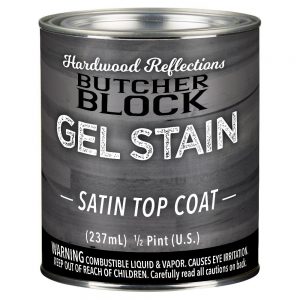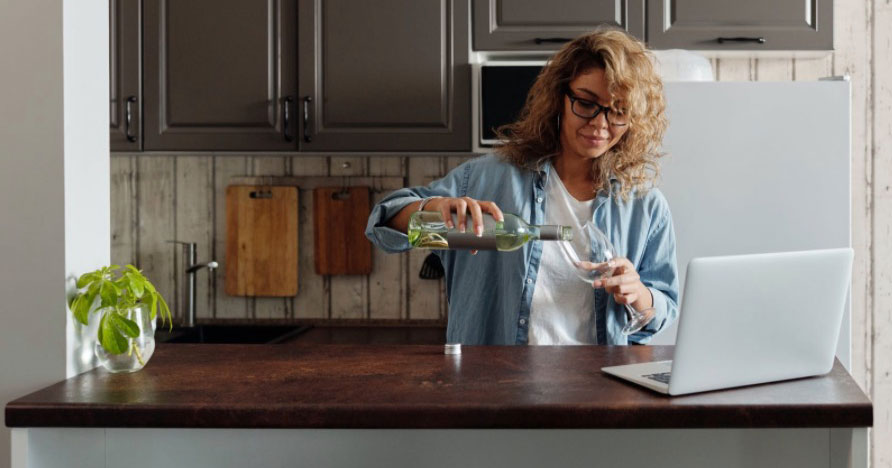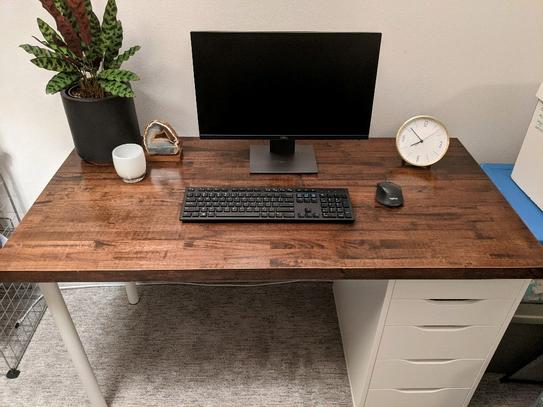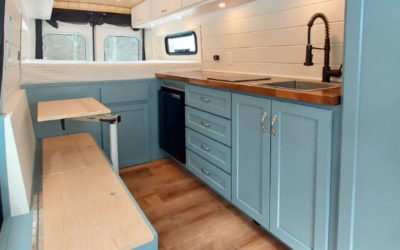Photo by Matilda Wormwood from Pexels
Known for adding both warmth and functionality to a space, butcher block countertops have replaced traditional marble in many new homes and renovation projects. Adding a butcher block countertop is a great way to update your kitchen, home office, or laundry room without breaking the bank.
Because butcher block countertops are often installed in high-traffic areas of the home, it’s important to know how to properly maintain them. Kitchen and bar areas are high-traffic areas and tend to see more wear-and-tear, especially from getting wet near the sink. Laundry rooms may lead to water damage or stains from detergent spills. Even a countertop in a home office will need to be maintained as work-worn areas (especially around the edges) tend to show their age.
Using Polyurethane to Waterproof Your Countertops
The hardest working areas of your butcher block countertops (typically those around the sink or are frequently exposed to water) may start to darken in patches if they’re not properly maintained. While water can invite mold to appear and grow, waterproofing your countertops is a great way to keep them clean and you’ll no longer have to stress about spills!
Follow these steps to easily waterproof your butcher block countertops with Polyurethane:

- Sand the counters until they’re completely clean
- Vacuum any dirt off the surface and apply a natural stain
- Apply a thick coat of Polyurethane, a liquid coating that dries into a plastic
- film, on top of the stain
- Apply a second coat of Polyurethane after drying
A Polyurethane coating will require no maintenance until it’s time to refinish and it makes wiping up spills easier than ever. However, these products do dry into a plastic film so they might not be the best option if you’re using your countertop as a cutting board.
Using an Oil Finish on Your Countertops
An oil finish is able to penetrate down into the wood, often bringing out the natural color and luster of the wood as a result. This option gives you direct contact with the distinctive texture of your butcher block countertops.
Oil finishes are able to be spot-repaired without having to sand the entire surface, unlike when using a Polyurethane finish. However, they will require more frequent maintenance, especially in high-impact areas such as food prep zones or around sinks.
This could be a great option to use in your home office or in an area that is away from any water.
Removing Dents from Your Countertops
Whether the dent occurred during installation or you’ve accidentally dropped something heavy on your countertops, removing dents is an easy and often necessary process!
Just follow these simple steps to remove any dents in your butcher block countertops:
- Sand the dent following the direction of the grain to remove any finish. Remove any dust with a damp cloth.
- Steam the dent with a hot iron and water. Fill the dent with water and let it sit for 90 seconds. After placing a damp cotton towel over the dent, move the iron in circular motions over the cloth until it’s dry. This usually takes about one minute.
- Lightly sand the area and apply the finish of your choice.
How does it work?
Steam penetrates the butcher block, causing the wood’s fibers to expand. Removing a dent in butcher block may require repeating the steaming process a few times. Steaming may not remove the dent completely, every time, but it can significantly improve the appearance.







